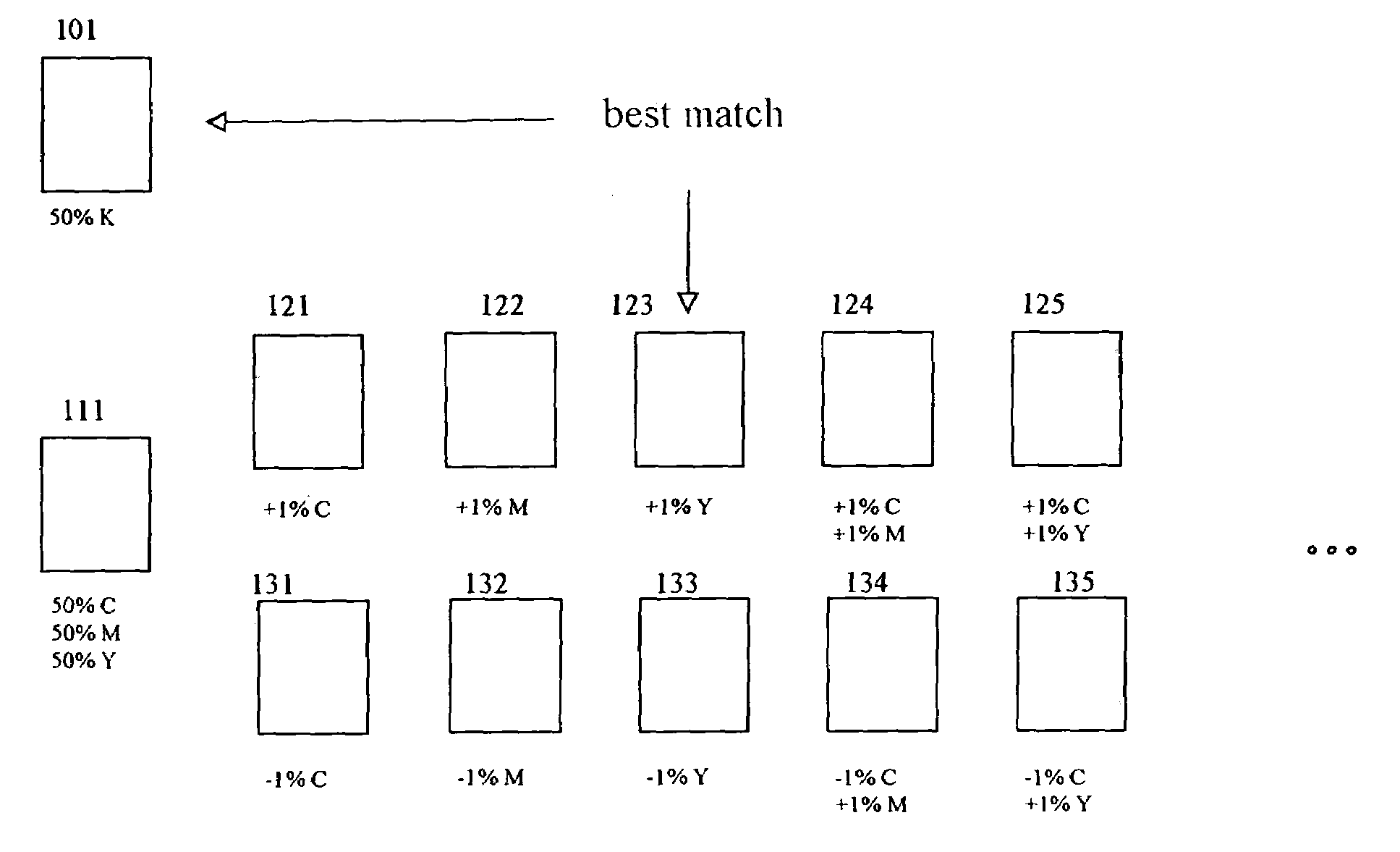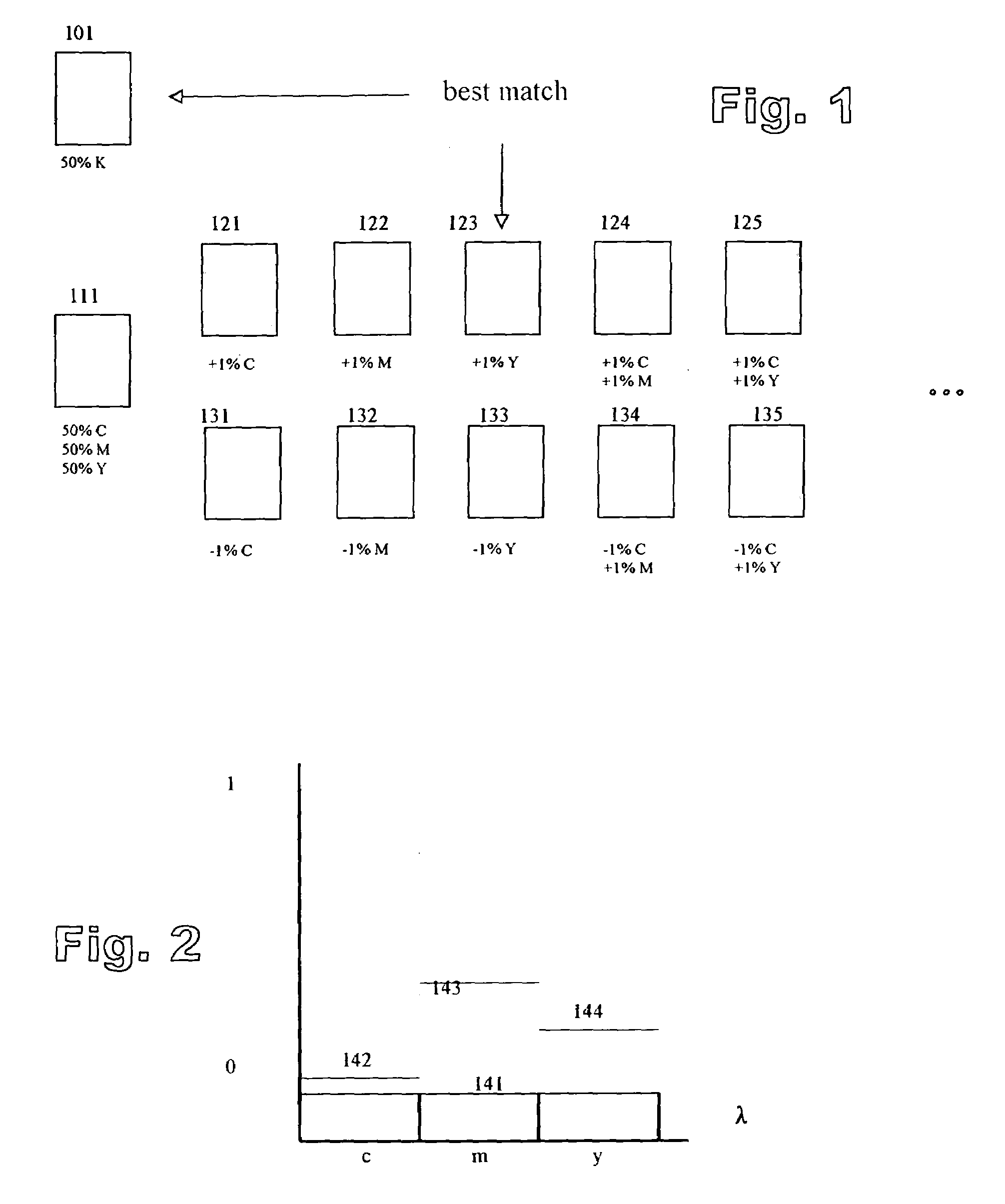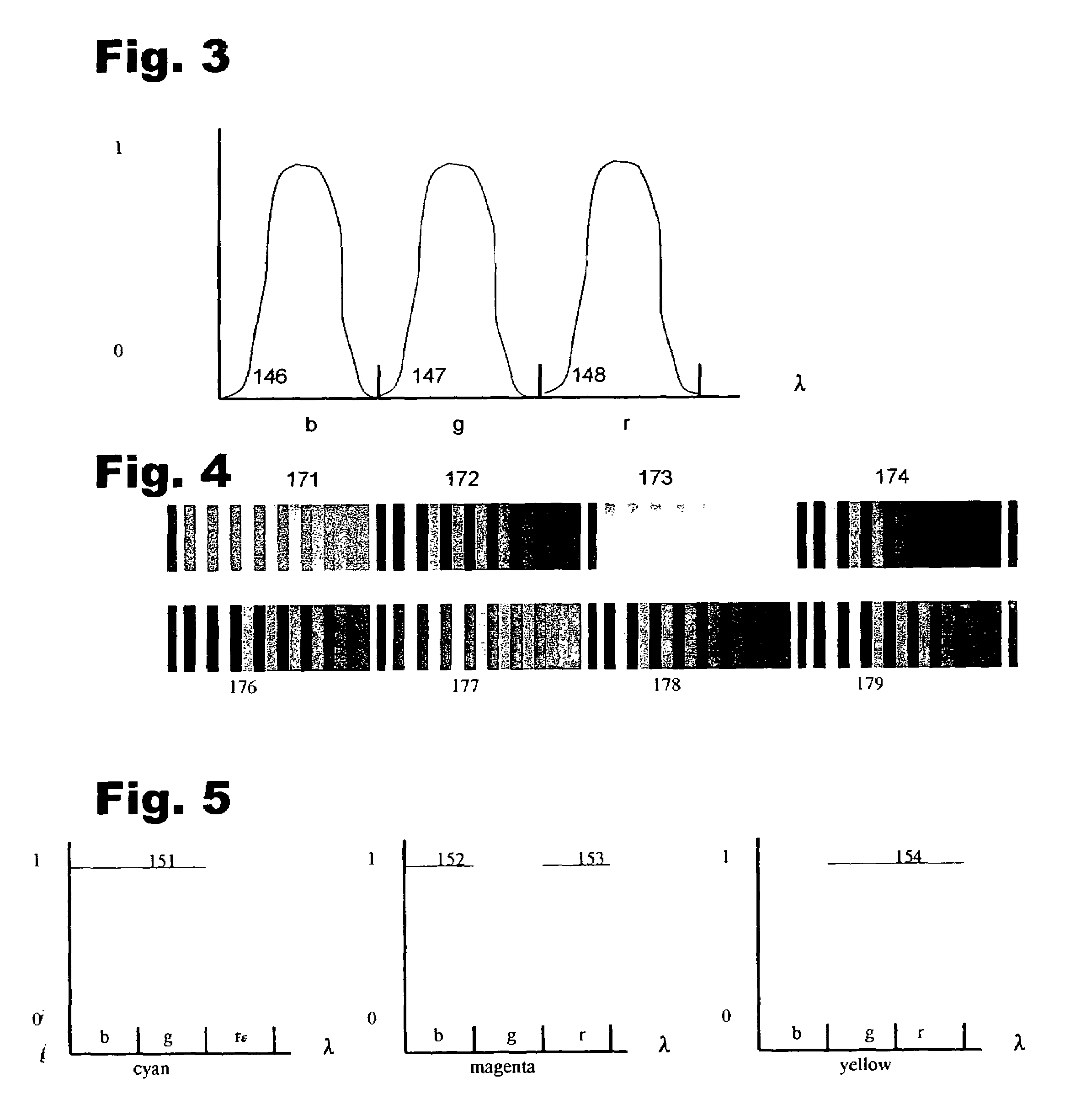Printing a true-ink reference, and refining gray accuracy, for optimum color calibration in incremental printing
a technology of incremental printing and true-ink reference, applied in the direction of printing, digitally marking record carriers, instruments, etc., can solve the problems of process-black miscalibration problem, measurement can go awry, one class of errors, etc., and achieve the effect of a much more precise and overall accurate calibration procedure, and a much more fine-grained calibration procedur
- Summary
- Abstract
- Description
- Claims
- Application Information
AI Technical Summary
Benefits of technology
Problems solved by technology
Method used
Image
Examples
Embodiment Construction
1. Gray Neutrality as a Color-Correction Standard
[0101]Experiments have shown that building the transfer functions in such a way as to establish gray neutrality foremost, instead of individual-primary linearity, yields better results. In particular, remarkably, the previously mentioned extreme sensitivity of colors to humidity is greatly reduced.
[0102]Furthermore, as mentioned earlier, gray neutrality is itself a desired property of the printer. With this technique this property is ensured.
[0103]The gray-neutrality approach, like some prior methods, is reliant upon comparative measurements of just-printed test patterns—using a sensor 251 (FIGS. 11 through 13). As a matter of convenience, in printing devices of the scanning type the sensor is most typically mounted on the carriage 220 which holds the printheads.
[0104]This arrangement enables positioning of the sensor automatically over any part of the test pattern (FIG. 1 or 4) on the printing medium 4A (FIGS. 12, 13). It is a partic...
PUM
 Login to View More
Login to View More Abstract
Description
Claims
Application Information
 Login to View More
Login to View More - R&D
- Intellectual Property
- Life Sciences
- Materials
- Tech Scout
- Unparalleled Data Quality
- Higher Quality Content
- 60% Fewer Hallucinations
Browse by: Latest US Patents, China's latest patents, Technical Efficacy Thesaurus, Application Domain, Technology Topic, Popular Technical Reports.
© 2025 PatSnap. All rights reserved.Legal|Privacy policy|Modern Slavery Act Transparency Statement|Sitemap|About US| Contact US: help@patsnap.com



